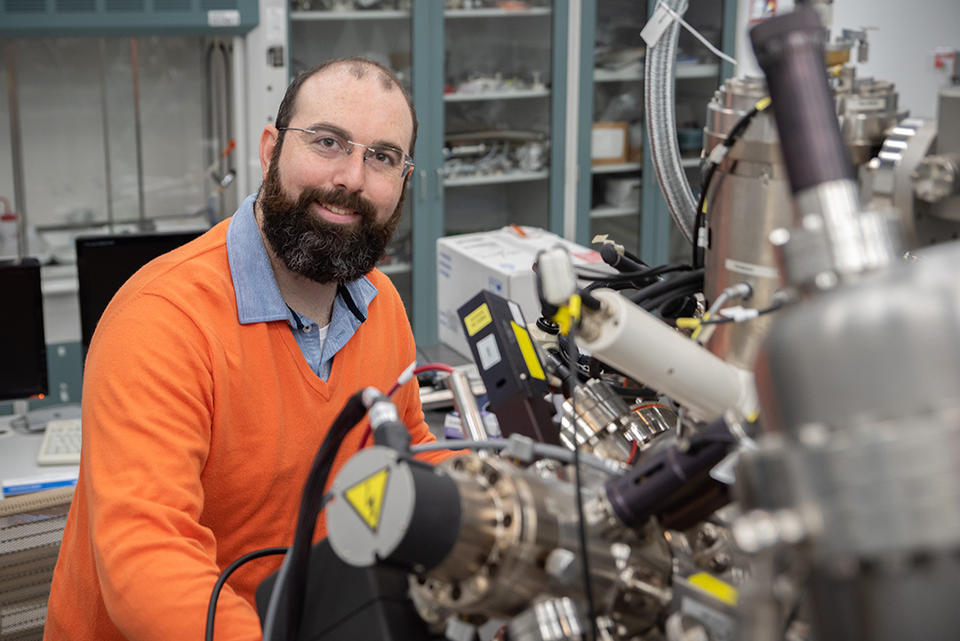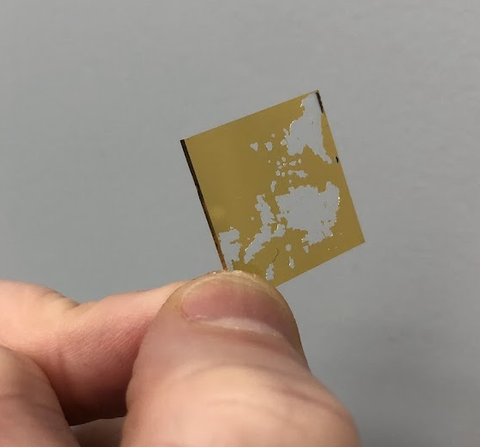Trey Diulus’ research aims to help researchers use diamonds in their electronics research.
Credit: R. Wilson/NIST
When you ask a child what career he wants to pursue, he will probably tell you about a career he has seen, such as a doctor, firefighter, musician, actor or teacher.
Although these are excellent choices, a scientist or an engineer may not be included on the list because children do not always know about these occupations or have an accurate visual representation of who these people are. or what they do. This can be especially so if they do not have scientists in their family or in the community who serve as role models.
That is why I am involved in a program to encourage all students to consider studying and pursuing careers in science. I currently work as a postdoctoral researcher at NIST, where I study diamond as an alternative to silicon for making electronic devices, such as computer chips.
I hope that by volunteering to be my pen pal, I can provide a resource for what a day is like as a scientist and encourage my pen pals’ interest in STEM fields.
Inspiring the Next Generation of Scientists
Each school year, I connect with other STEM professionals from around the country to correspond with students and educate them about career opportunities in our fields. The organization we work with matches us with students from schools in low-income areas, where children may not have many role models in STEM fields. We exchange letters once each quarter during the school year. All discussions are managed and moderated by the teachers and organization coordinator.
As part of this process of writing letters, I learned that it is important that we do not think about the background of students and promote their interests, regardless of how busy they seem or their interest in science. The organization suggests what to write based on what students are learning and their grade level, usually between 5th and 8th grade.
One of the most interesting aspects of this activity is the questions the children ask in the letters. Sometimes, they ask me about things like my hobbies, my favorite food or where I went to school.
A student asked if we had deer on the NIST campus in Gaithersburg, Maryland. (Answer: We have a lot of them!)
One pen father said they wanted to learn more about science to understand why spiders don’t fall down when they climb a wall. (Answer: They have small hairs that allow them to stick to the surface.)
It is exciting to see what kind of questions children ask when they are introduced to new and exciting things.
If You Can See It, You Can See It
The Letters to a Pre-Scientist (LPS) program is very inspiring to me because I am able to encourage young people to consider a career in science or engineering – which is very rewarding.
One school year, I corresponded with a student who wanted to work in construction. This is not surprising as children are often attracted to construction work and cars. Building something from nothing is a great job.
But I wanted them to know that there are many other jobs available in the same fields that involve more science and engineering. Additionally, I hoped to encourage their interest in pursuing an advanced degree, where they would have the opportunity to develop a STEM career in building something. While higher education is not for everyone, the goal is to broaden the horizons of the types of careers available to our correspondents, who may not be aware of the many career options available. .
Finally, this pen pal and I talked about structural engineering – the people who design the structures that construction workers build. I also talked to them about career opportunities in the science of cement and other building materials, known as materials science. Without these scientists, construction trucks would not have the cement to pour or other materials they need to do their jobs.
These career options are not obvious to children because they cannot see the job while riding or walking by the construction site.
Although I don’t know if my letters changed the perspective of that student, I hope that I gave them a few ideas to think about when they think about their future or maybe when they choose a major.
Making the Computer Chips of the Future

Credit:
JT Diulus/NIST
As I mentioned earlier, I am researching other materials for electronic devices, including computer chips.
Most chips are made of semiconductors, such as silicon. (That’s where the term “Silicon Valley” comes from.) But increasingly, consumer products require electronics to handle electrical power more than ever before. Cars, vacuum cleaners, refrigerators, phones and more now require advanced electronics that we need to make in the most energy efficient way possible.
It’s fun to explain this type of work to students in age-appropriate language. I often tell them about the vacuum chamber in which I work to deposit thin metal films for making electronic devices. I once saved a piece of quartz slide in gold (not worth the money) from one of my experiments and sent it along with one of my letters. This gave the student a physical reminder of the work I was doing.
Scientists as Puzzle-Solvers
When I was a child, I remember being very interested in creating or building things, either with Legos or computer simulation games. I also enjoyed solving puzzles and playing games that made me think outside the box.
But it wasn’t until I finished school that I realized that I could actually build or solve puzzles every day by doing research. This kind of work makes me happy. I was fortunate to find a career path that stimulated my interests, even though I had not initially considered pursuing a career in science, especially not research.
I got the job because my high school math teacher encouraged me to major in math when I applied to college, because of my performance in his class. My teacher made learning math fun, so it was easy to take her advice with confidence.
That’s the kind of mentoring relationship I hope to provide, even if it’s just four letters.
I only hope that introducing science, my work, or my hobbies and lifestyle to my pen pals can help them find their interests and how to pursue them at a young age. more than I did.
#Career #Interest #Motivating #Students #Pursue #STEM #Education